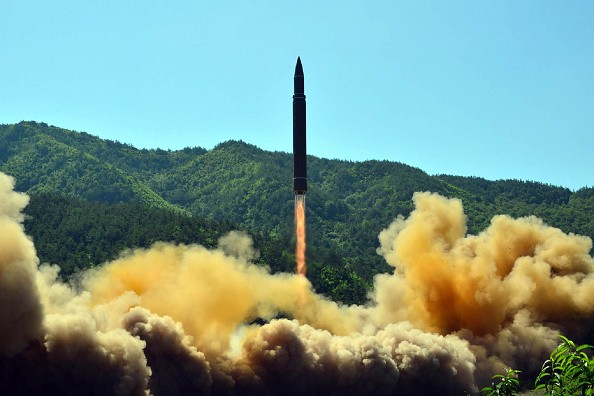Interesting Engineering reports that the L3Harris' projected 16 hypersonic missile tracking satellites have finally been greenlighted for production by the United States Space Development Agency (SDA), more than a year after the US firm won the contract.
SDA has previously stated that these prototypes will give worldwide and persistent indicators of conventional and advanced missile threats, including hypersonic missile systems and detection, warning, tracking, and identification.
Interesting Engineering, citing L3Harris' news release, adds that production will proceed after the firm passes a critical design review (CDR) and a production readiness review (PRR). The CDR milestone verifies that L3Harris' design meets the mission criteria, while the PRR gives L3Harris clearance from the SDA to commence full production.

To meet the CDR requirements, the firm stated that L3H began manufacturing essential subassemblies long before the review. After completing the CDR and PRR, the team moved on to the assembly and integration phase, working closely with more than 20 key subcontractors and dozens of vendors that provide crucial parts for the satellites and ground systems.
These significant breakthroughs bring the program closer to completing the SDA's Proliferated Warfighter Space Architecture (PWSA), a durable, layered network of military satellites in low-Earth orbit.
On a separate post, SDA adds that the PWSA will assist enhanced weapon targeting by providing 24/7, all-weather custody of time-sensitive, left-of-launch surface mobile targets.
Read Also : Boeing, Kratos to Develop Bolt-On Kit That Turns 'Dumb' Bomb Into Precision Cruise Missile
L3Harris Contract
L3Harris first won the $700 million contract in 2022, as reported by Space News, to develop and manufacture 16 Tracking Layer Tranche 1 satellites; Maxar Technologies was also chosen as the company's satellite bus supplier.
L3Harris is not the lone firm on these agreements, as a contract has also been awarded to Northrop Grumman Strategic Space Systems of Redondo Beach, Calif.
These contracts reportedly aim to build a space segment capable of collecting infrared data and providing network communications. Each agreement contains a launch services component for launch preparation and an operations and sustainment portion.
US' Need for an Improved Missile Tracking Satellite
Hypersonic Missiles are a glaring concern for any country as L3harris states that hypersonic missiles are the most disruptive kinetic weapons in an opponent's arsenal because of their low flight profiles, variable launch sites, and excellent agility.
The US requires a durable sensor platform to lift the veil from their flight paths to discourage their employment and, when necessary, defeat them.
As reported by CNBC, SDA has seen the need to improve the space capabilities of the US as the Pentagon is becoming more ambitious in space, recognizing the need to keep up with China's rising capabilities in a sector with far-reaching implications for national security operations on Earth.
The Space Force's budget has grown the most, with $30 billion requested for fiscal 2024. Much of the financing goes to defense contractors and space firms that provide military products and services.
SDA's system's first satellites reportedly launched in April. Those Tranche 0 satellites were the initial attempt to establish the network's viability.
Related Article : Northrop Grumman, US Air Force to Develop Advanced Air-to-Ground Missile to Take on Fast-Moving Enemies





